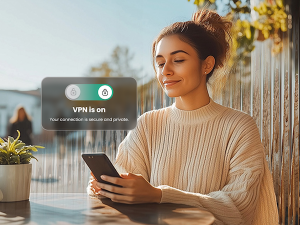With many people having their normal day to day life turned upside down, scammers are capitalizing on consumers’ newfound lifestyles to make a financial gain or wreak havoc on users’ devices. Let’s take a look at the most recent threats that have emerged as a result of the pandemic.
Fraudulent Relief Checks
On Wednesday March 25, the Senate passed a relief bill that contains a substantial increase in unemployment benefits for Americans who have lost their jobs or have been furloughed due to the economic fallout from the pandemic. Financial scammers are likely to use this as an opportunity to steal money offered to Americans who are facing the negative economic effects of the pandemic, as these crooks could make consumers believe they need to pay money as a condition of receiving government relief. The Federal Trade Commission issued a warning to consumers to be on the lookout for fraudulent activity as the government implements these financial relief packages.
Map Used to Track Pandemic Used to Spread Malware
According to security researcher Brian Krebs, criminals have started disseminating real-time, accurate information about global infection rates to spread malware. In one scheme, an interactive dashboard created by Johns Hopkins University is being used in malicious websites (and possibly in spam emails) to spread password-stealing malware. Additionally, Krebs flagged a digital pandemic infection kit, which allows other criminals to purchase a bundled version of the map with the scammer’s preferred attack method.
Texts, WhatsApp, and TikTok Spread Falsehoods
Due to the nature of the rapidly evolving pandemic, criminals are taking advantage of the situation by spreading misinformation. As more communities are being ordered to shelter in place, misleading text messages announcing a national quarantine claiming to come from the White House buzzed onto cell phones around the U.S. According to the Washington Post, the fraudulent text messages encouraged users to, “Stock up on whatever you guys need to make sure you have a two-week supply of everything. Please forward to your network.” These fake texts spread so widely that the White House’s National Security Council debunked the misleading claims in a Twitter post stating, “Text message rumors of a national #quarantine are FAKE. There is no national lockdown.” Communication apps like WhatsApp and social media platforms like TikTok have carried similar examples of this misinformation.
Robocalls Offering Free Test Kits and Low-Cost Health Insurance
On top of fraudulent messages floating around via SMS, WhatsApp, and TikTok, scammers are also using robocalls to spread misinformation around the global pandemic, especially as more users are at home and available to answer phone calls as a result of self-isolation. According to CNN, robocalls from more than 60 different phone numbers are falsely offering low-priced health insurance and free coronavirus test kits. Another type of robocall asks users to sign a petition to ban flights from China. Criminals are taking advantage of the fact that new information around the pandemic is constantly being released, presenting them with an opportunity to scam users by impersonating local and federal officials.
Stay Safe Online With These Tips
During this time of uncertainty, it can be difficult to decipher what is fact from fiction. When it comes to the potential online threats around the recent pandemic, here’s what you can do to stay protected:
Only trust official news sources
Be sure to only trust reputable news sites. This will help you filter out fake information that is just adding to the noise across the internet.
Don’t share your personal or financial data
Although financial relief checks are not yet a reality, know that the federal government will not ask you to pay fees or charges upfront to receive these funds. Additionally, the government will not ask you for your Social Security number, bank account, or credit card number.
Beware of messages from unknown users
If you receive a text, email, social media message, or phone call from an unknown user regarding the pandemic, it’s best to proceed with caution and avoid interacting with the message altogether.
Go directly to the source
If you receive information regarding the pandemic from an unknown user, go directly to the source instead of clicking on links within messages or attachments. For example, users should only trust the map tracking the pandemic’s spread found on the Johns Hopkins website. Using a tool like McAfee WebAdvisor can help users stay safe from similar threats while searching the web.
Register for the FCC’s “Do Not Call” list
This can help keep you protected from scammers looking to capitalize on current events by keeping your number off their lists.
Stay updated
To stay updated on all things McAfee and on top of the latest consumer and mobile security threats, follow @McAfee_Home on Twitter, listen to our podcast Hackable?, and ‘Like’ us on Facebook.











